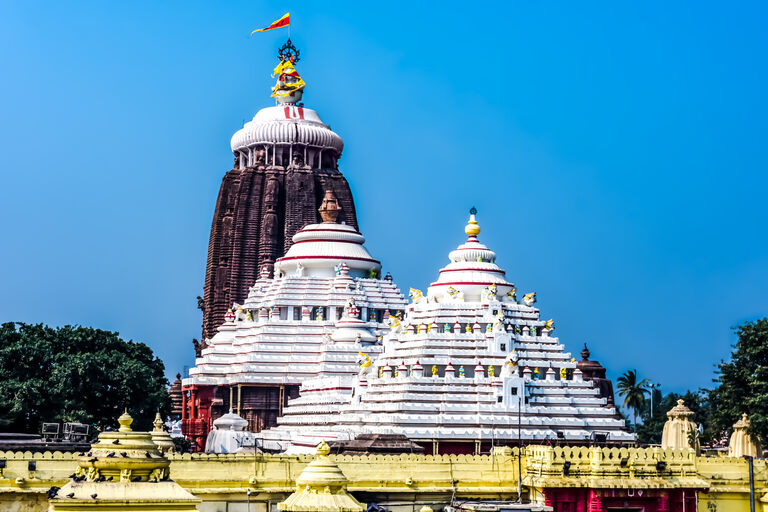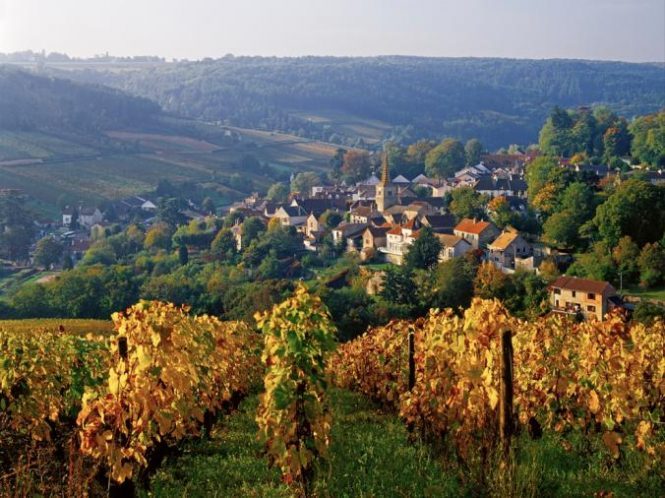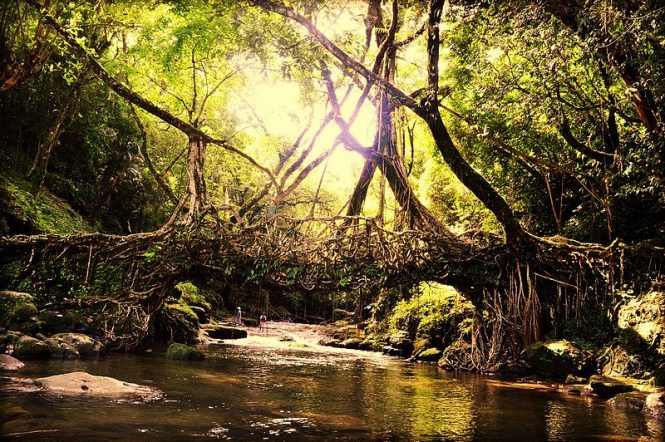
The Sacred Sands of Puri: Unraveling The Mysteries Of Jagannath Temple & Beyond
Table of contents
Nestled amidst the tranquil sands of Puri lies the Jagannath Temple, a sanctuary of spirituality and wonder. As one of the Char Dhams, this ancient pilgrimage site holds a special place in the hearts of Hindu devotees.
The temple was constructed in the 12th century with the support of King Anantavarman Chogaganga Deva. It is not just a simple structure but rather a symbol of faith and devotion. The temple’s main attraction is the enigmatic presence of Lord Jagannath, a form of Vishnu. Every year, millions of devotees visit the temple to witness the grandeur of its Rath Yatra.
Besides its religious significance, the surroundings of Jagannath Temple are steeped in mystery that challenges conventional explanations. In this blog post, we will delve into the captivating tales and legends that shroud the mysteries of Jagannath Temple.
Jagannath Puri Temple’s History
The history of the Jagannath Puri Temple is steeped in legend and mystery, weaving a tale of devotion and divine intervention. Dedicated to Lord Jagannath, a manifestation of Lord Vishnu, this sacred Hindu temple holds a revered place in the hearts of millions.
As per ancient legends, Lord Jagannath was first worshipped as Neela Madhaba in a forest by King Viswavasu. Intrigued by the deity, King Intradyumna sent his Brahmin priest, Vidyapati, to find the divine site. Vidyapati, motivated by his love for Viswavasu’s daughter Lalita, managed to locate the concealed cave where Lord Jagannath was worshipped.
Upon learning of the deity’s existence, King Indradyumna embarked on a journey to Odisha to find the idol. Despite initial setbacks, divine guidance led him to construct a temple atop Nilasaila, or the Blue Mountain. However, Brahma’s prolonged meditation caused the temple to be buried under sand.
King Indradyumna was instructed by a celestial voice to carve idols from a floating log on the seashore. He erected a magnificent temple and enshrined the wooden images of Lord Jagannath, Balabhadra, and Subhadra with unwavering faith. This tale of perseverance and divine intervention underscores the Jagannath Puri Temple’s mystical aura. Despite challenges and obstacles, the temple stands as a symbol of devotion and spirituality, inviting pilgrims to explore the mysteries of its ancient origins and profound significance in Hindu mythology.
Mysteries of Jagannath Temple
The temple has some unexplained science, miracles and mysteries. Historians, scientists, and even priests could not figure out the Jagannath Puri Temple mystery. Let’s find out what these mysteries are:
1. Flag’s Direction
The direction of the flag atop the temple is one of the most fascinating Jagannath Puri mysteries. Contrary to the natural laws of wind, the flag flutters in the opposite direction. This tradition, which is over 1800 years old, involves a priest climbing the temple daily to change the flag.
Legend has it that if the ritual is neglected, the temple will have to remain closed for eighteen years. This breathtaking act, performed without any protective gear, adds to the temple’s mystique. It fascinates visitors with its divine defiance of the elements.
2. The Sudarshan Chakra
Among the enigmatic Jagannath Temple secrets lies the Sudarshan Chakra, shrouded in mystique and wonder. Weighing a tonne, it is placed atop the temple without any machinery, hinting at a divine force at work.
Yet, another mystery lies in its architectural design. The Chakra presents an identical appearance from every angle, defying conventional principles. Crafted with an ancient technique, this sacred wheel holds the essence of symmetry and transcendence in its form.
3. A Light With No Darkness
One of the mysteries about Jagannath Temple also includes a phenomenon that defies logic and explanation: the absence of shadows. Regardless of the time or the sun’s position, the temple remains untouched by shadow, casting doubt on whether it is an architectural marvel or a divine miracle. This peculiar absence of darkness adds to the temple’s mystique, leaving visitors pondering the unknown forces within its sacred confines.
4. Wooden Idols
Within the mysteries of Jagannath Temple also lies a sacred tradition: the renewal of wooden idols during Nabakalebara. Every 8, 12, or 19 years, new idols are crafted from specially chosen neem trees and their carvings are done in secrecy. This ritual, completed within 21 days, replaces the old idols reverently buried near Koili Vaikuntha. In 2015, millions of devotees witnessed this profound event, honouring the divine cycle of renewal and perpetuating the spiritual legacy of Jagannath Temple’s wooden idols.
5. Nothing Flies Above The Temple
Another Jagannath Puri Temple mystery involves a phenomenon where nothing flies above it. Unlike other temples in India, no birds or planes grace the skies above this sacred site. It is as if a divine force declared it a no-fly zone, shrouded in mystery without logical explanation. This inexplicable occurrence adds to the temple’s mystique, captivating visitors and leaving them in awe of the unseen forces that govern the airspace above Jagannath Puri Temple.
6. Mute Water
As soon as you step inside from the Singha Dwara entrance, the sound of ocean waves disappears entirely, especially noticeable in the evening. This silence within the temple walls is believed to be the fulfilment of Subhadra Mayi’s wish for peace. No scientific explanation can account for this phenomenon, leaving visitors in awe of the unseen forces that govern the temple’s environment. Indeed, mute water remains one of the most captivating mysteries about Jagannath Temple.
7. Abadha Mahaprasadam
Within the sanctum of Jagannath Temple secrets lies the Abadha Mahaprasadam, a divine feast is served to Lord Jagannath. This sacred offering consists of 56 mouthwatering delicacies served in 5 phases. Divided into two types, sukhila and shankhudi, it consists of a range of dry confectionaries and savoury items like rice and dal. Available to devotees at Ananda Bazaar, located within the temple premises, the Abadha Mahaprasadam is not just a meal but a transcendent experience, offering a taste of spiritual nourishment.
8. Reverse Gear of the Breeze
Traditionally, the sea breezes blow towards land during the day and vice versa at night. However, Puri defies convention. Here, the winds and waters perform a silent dance, with daytime winds blowing from land to sea and evening winds from sea to land. This reversal of geographical norms adds to the Jagannath Puri mysteries, leaving visitors enchanted by the enigmatic forces that govern its serene waters.
9. Preparation of Mahaprasadam
Thousands of priests come together to cook the divine feast in the temple. They stack seven earthen pots, one atop the other, and cook the food over firewood. What’s baffling is that the food in the topmost pot cooks first, followed by the rest. This culinary riddle adds to the mysteries of Jagannath Temple.
10. Mystery of Simhadwaram
As the main entrance to the temple, Sindhadwaram welcomes visitors with the distant sound of waves. However, the ocean’s roar mysteriously fades away upon passing through Singhadwaram and retracing one’s steps. Inside the temple’s sanctum, the waves’ sound vanishes completely. This perplexing phenomenon adds to the temple’s aura of wonder.
11. The Rath Yatra
The Rath Yatra is an annual procession where the idols from Jagannath Temple are paraded on two sets of chariots, three each. The first chariot carries the deities to the river, separating the temple from the Mausi Maa temple. Then, the idols are transferred onto boats to cross the river. Next, the second chariot carries the deities from the river to the Mausi Maa Temple, where special rituals are conducted. This vibrant and sacred event draws thousands of devotees, celebrating the journey of Lord Jagannath, Balabhadra, and Subhadra.
Architecture of Jagannath Puri Temple
The architecture of the Jagannath Puri Temple is truly a marvel to behold. Its classic Oriya design stands as a testament to ancient craftsmanship and devotion. The temple is enclosed by two imposing rectangular walls, covering an expansive area of approximately 4,00,000 square feet. The outer wall, known as Meghanada Pacheri, stands tall at 20 feet, while the inner wall, Kurma Bedha, surrounds the main temple, creating a sacred sanctuary.
At the heart of the temple rises the majestic shikhara, or tower, housing the revered deities. The temple comprises four distinct structures arranged in a row: the Vimana, Jagamohan (porch), Nata Mandir, and Bhoga Mandap, each exuding grandeur and spiritual significance.
Four ornate gates adorn the temple complex, each symbolizing different animal motifs: the eastern Singhadwara (Lion Gate), southern Ashwadwara (Horse Gate), western Vyaghrasana (Tiger Gate), and northern Hastidwara (Elephant Gate). The Lion Gate on Grand Road serves as the main entrance, welcoming devotees into its sacred precincts.
Crowning the temple’s summit is the iconic Nila Chakra, or Blue Wheel, crafted from various metals. A new flag is ceremoniously hoisted atop this sacred wheel every day, symbolizing divine protection and blessings showered upon the faithful. The architecture of Jagannath Puri Temple stands as a timeless testament to India’s rich cultural heritage and spiritual legacy, captivating visitors with its beauty and sanctity.
Best Time to Visit the Jagannath Temple
If you are planning a visit to the Jagannath Temple, the months of May to July might surprise you. Despite the heavy rainfall during this monsoon season, these months host some of the temple’s most vibrant festivals, including the famous Rath Yatra.
While the weather might not be ideal, being a part of these dazzling celebrations is an experience like no other. Just be prepared for higher prices and larger crowds as devotees from all over flock to witness the divine festivities during this auspicious time.
How To Reach the Temple?
You can choose the following mode of transport to reach the temple:
- By Air: Getting to the Jagannath Temple in Puri is quite convenient! If you are flying in, the nearest airport is in Bhubaneshwar, about 56 km away. From there, you can easily catch a taxi to Puri.
- By Road: Buses are available from Vishakhapatnam, Kolkata, and Bhubaneshwar.
- By Rail: Puri lies along the Calcutta-Chennai You will find plenty of trains stopping at Puri Railway Station.
Things to Know Before Visiting the Jagannath Temple
There are things that you need to keep in mind before visiting the Jagannath Puri Temple:
- For a hassle-free darshan, it is advisable to follow the queue system.
- Do not make noise inside the temple.
- Keep the premises of the temple clean.
- Beware of monkeys and pickpockets.
- Do not eat non-vegetarian food or drink liquor and other intoxicants during the Darshan of the deities.
- Do not carry cooked food within the premises.
- Footwear and leather items are not allowed in and around the premises.
- You cannot carry umbrellas, mobile phones, or electronic gadgets in the temple.
Things to do Near Jagannath Puri Temple
After visiting the Jagannath Puri Temple, you can begin a guided tour of the Old City, including the pottery area, offered by Grass Roots Journeys. It is perfect for foreigners keen to learn about the temple’s surroundings.
You can also take a short drive to Raghurajpur handicraft village. Here, artisans showcase their skills, with Pattachitra paintings being a highlight. For a fun day out, head to Puri’s main beach, bustling with Indian tourists enjoying water sports, horse and camel rides, and soaking up the carnival-like atmosphere.
And don’t miss the chance to visit the awe-inspiring Konark Sun Temple, just a side trip away from Puri. This UNESCO World Heritage Site will mesmerize you with its magnificent architecture and rich history.
From the architectural marvels of the temple to the enigmatic rituals and phenomena that defy explanation, this blog delves deep into the spiritual and cultural significance of Puri. Visitors are invited to discover the secrets of the temple, including the flag’s mysterious direction, the silent waters within, and the divine traditions of the Mahaprasadam.
Uncover Puri’s wonders with Thomas Cook’s Odisha Tour Packages. Our expertly crafted itineraries ensure a seamless and enriching travel experience, allowing you to explore the ancient treasures of Jagannath Temple and beyond. Don’t miss this opportunity to embark on a transformative journey through the sacred sands of Puri.
Table of contents
Trending blogs for you
 18002099100
18002099100




















